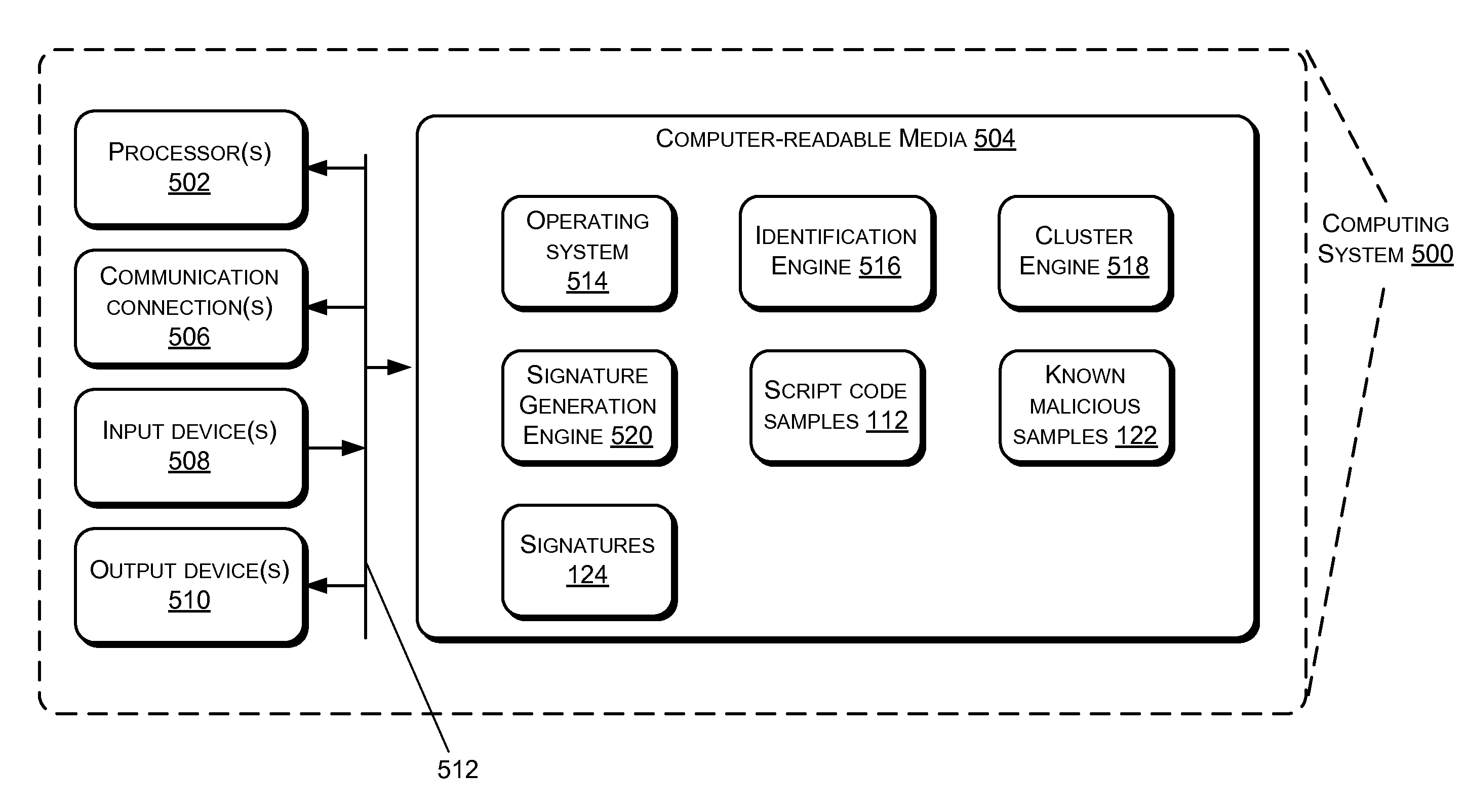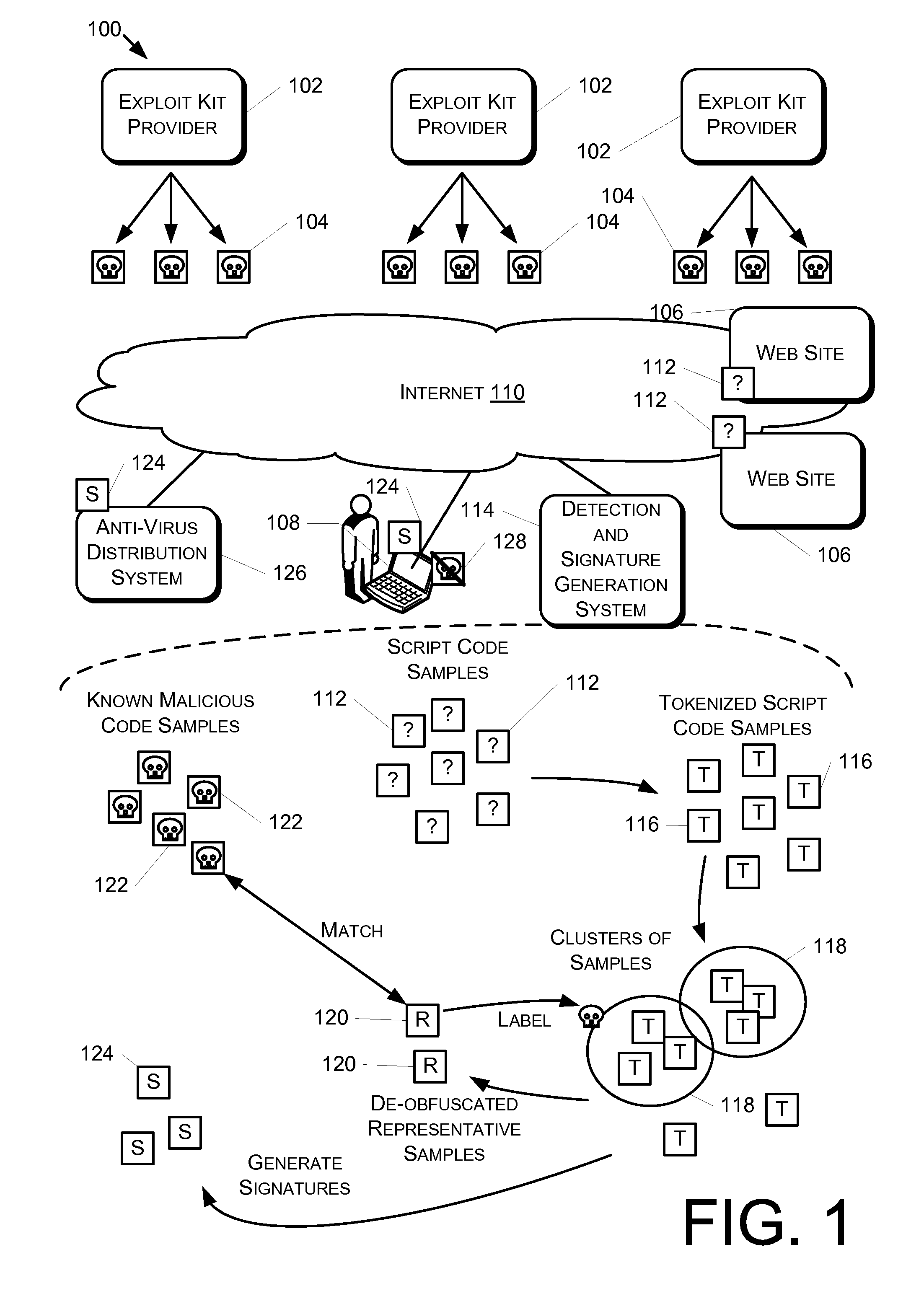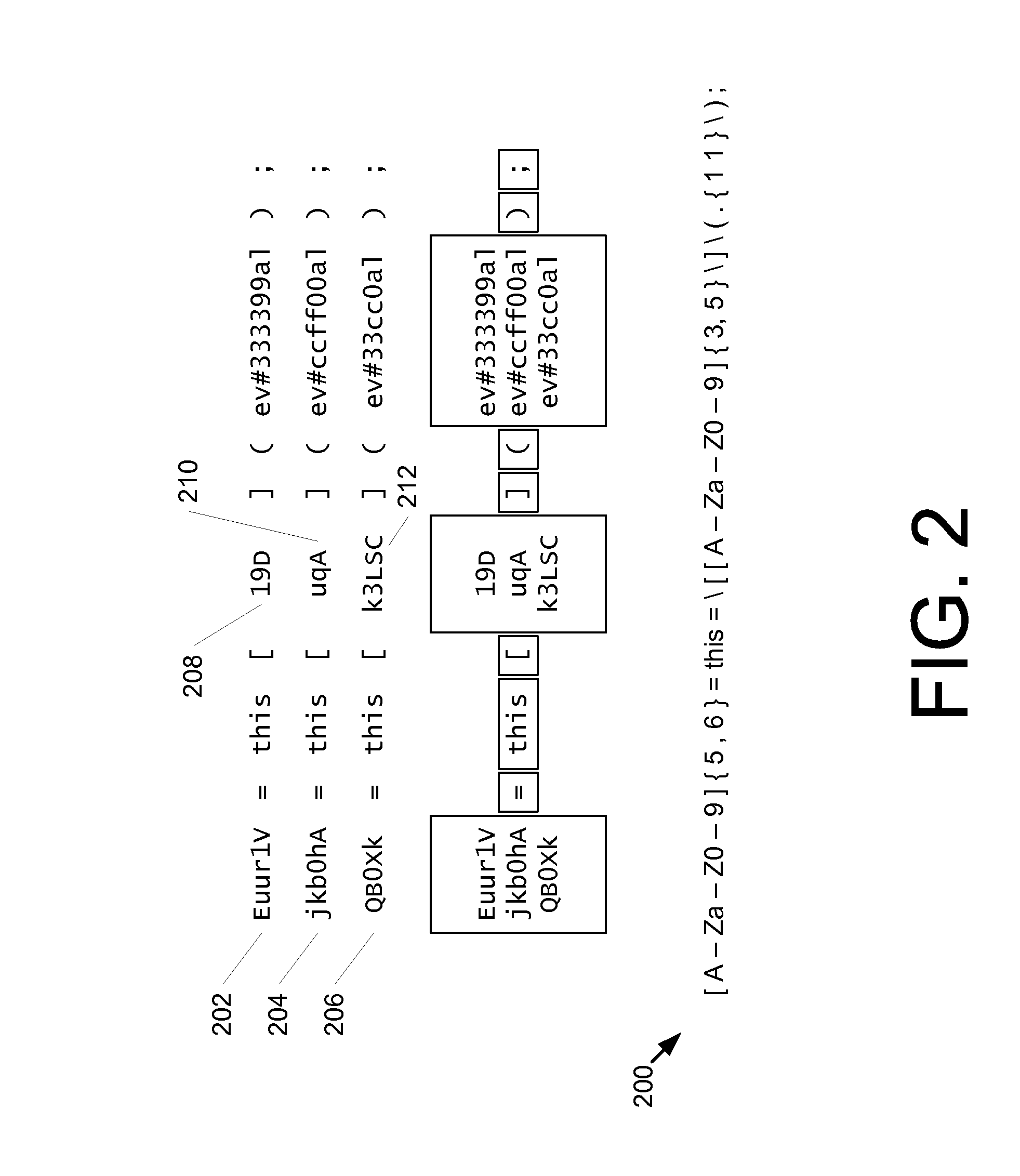Code Labeling Based on Tokenized Code Samples
a code sample and tokenization technology, applied in the field of code labeling based on tokenized code samples, can solve the problems of constant arms race, inability to identify new versions, and inability to use anti-virus signatures that target previous versions of exploit kits
- Summary
- Abstract
- Description
- Claims
- Application Information
AI Technical Summary
Benefits of technology
Problems solved by technology
Method used
Image
Examples
example environment
[0020]FIG. 1 illustrates an example environment 100 for providing malicious code detection and signature generation. As noted above, various exploit kit providers 102 produce multiple versions of their exploit kits 104. The various exploit kits 104 made available by the exploit kit providers 102 may be released over time, with changes that are made responsive to anti-virus detection, with changes to add a new exploit, or changes made for other reasons. Websites 106—or other sources of content—are available to end user devices 108 via the Internet 110, or via some other network. The websites 106 provide static and dynamic content, including among other things script code samples 112. The status of script code samples 112 is initially unknown; in other words, it is not known whether one or more of the script code samples 112 are malicious code, such as one of the exploit kits 104, or benign script code.
[0021]A detection and signature generation system 114 receives the script code samp...
example processes
[0037]FIG. 3 depicts a flow diagram of an example process 300 for automated identification of malicious code. At 302, a detection and signature generation system, such as the detection and signature generation system 114, receives a plurality of script code samples. The plurality of script code samples are, in some embodiments, JavaScript® code samples although other types of script code samples may be used without departing from the scope of embodiments. The plurality of script code samples may be obtained by crawling the internet or other network, provided by another entity, or obtained in some other way. The script code samples include script codes of unknown status, e.g., it is unknown whether they are malicious or benign.
[0038]At 304, the detection and signature generation system divides the plurality of script code samples into partitions. In embodiments, the clustering steps are computationally intensive and may benefit from parallel execution on multiple devices. Partitionin...
example clauses
[0058]Clause A: A computer-implemented method comprising receiving a plurality of script code samples; transforming the plurality of script code samples into a plurality of tokenized samples, the transforming based on syntactical elements of the plurality of script code samples; identifying a cluster of samples based on similarities in different ones of the plurality of tokenized samples; identifying known malicious code having a threshold similarity to a representative sample of the cluster of samples; based on the identifying, labeling the cluster of samples as malicious; and generating, based at least on respective ones of the plurality of tokenized samples associated with the cluster of samples, a generalized code signature usable to identify the script code samples in the cluster of samples.
[0059]Clause B: The computer-implemented method of clause A, wherein at least some of the plurality of script code samples are obfuscated code samples, and the tokenized samples are transfor...
PUM
 Login to View More
Login to View More Abstract
Description
Claims
Application Information
 Login to View More
Login to View More - R&D
- Intellectual Property
- Life Sciences
- Materials
- Tech Scout
- Unparalleled Data Quality
- Higher Quality Content
- 60% Fewer Hallucinations
Browse by: Latest US Patents, China's latest patents, Technical Efficacy Thesaurus, Application Domain, Technology Topic, Popular Technical Reports.
© 2025 PatSnap. All rights reserved.Legal|Privacy policy|Modern Slavery Act Transparency Statement|Sitemap|About US| Contact US: help@patsnap.com



